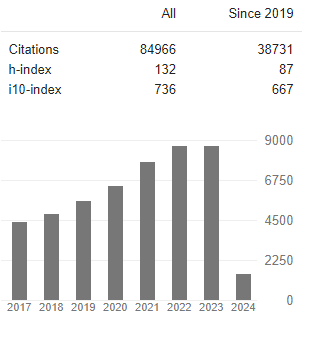Molecular Detection and Genotyping of P. Multocida, M. Hemolytica, and B. Trehalosi Isolates Targeting the Virulence Associated Genes from Ethiopian Cattle and Sheep
Abstract
Getaw Deresse, Esayas Gelaye,Takele Abayneh, Kenaw Birhanu, Girma Zewdie, Liyuwork Tesfaw, Belayneh Getachew, Abinet Legesse, Mirtneh Akalu, Bogale Gosaye
Pasteurellaceae families are usually considered opportunistic pathogens which inhabit normal flora on the mucosal membranes of the upper respiratory and the lower genital tracts of mammals and birds. The majority of P. multocida, M. hemolytica, and B. trehalosi isolates are opportunistic animal pathogens and cause disease only under certain conditions. Some of the target genes are shared by isolates found in the same or different genera.. The alpha / beta hydrolase kmt1 genes part of OMP and SLP are shared by all P.multocida species and FbpA is common gene for both P.multocida and M. hemolytica isolates. Other virulence related genes are used for genotyping of P.multocida, M.hemolytica and B.trehalosi isolates. The objective of the current research was focused on the detection and genotyping of different target genes that can be found in the isolates of P. multocida, M. hemolytica, and B. trehalosi using various PCR primers. The distributions of virulence-associated genes were assessed in the isolates of the three genera.
Materials and Methods: A total of eight isolates from P. multocida, M. hemolytica, and B. trehalosi isolated from clinical cases of cattle and sheep and stored at the Bacteriology laboratory of NVI were used as source of samples for the present study. DNeasy® Blood & Tissue Kit (Qiagen, Germany) was used for the extraction of DNA from bacterial isolates. Different primers were used for genotyping of P. multocida, P.hemolytica and B.trehalosi isolates.
Results: P.multocida was detected using species-specific kmt1 primer with an amplicon product of 460bp. Four serogroups of P.multocida (A, B, D, &E) were detected using serotype-specific primers with amplification products of 1044bp, 760bp, 657bp, and 511bp respectively. PCR was conducted to HS causing P.multocida type B and detected 620 bp amplicons. SLP genes were detected in all P.multocida serotypes with an amplification product size 1400-1553bp. In addition to that, the four P. multocida serotypes were found to be positive for BRD-PmSLP with an amplification product of 460bp but using recombinant HS-SLP primers resulted in the double band at 460 bp and 541bp for serotypes A and D. However, HS causing type B& E serotypes were detected with an amplified product of 541bp. TbpA2 has been detected with an amplicon size of approximately 750 bp for types (A and D) and 1300bp for type B using TbpA-F2/Rev primers. All of the P.multocida serotypes (A, B, D&E) and M. hemolytica (A: 1) were strongly positive for the iron acquisition FbpA gene with amplification bands at 500bp and 1000bp, respectively. A multiplex PCR as-say was carried out for detection of M. haemolytica A: 1 using PHSSA and Rpt2 primers with amplification products of 327pb and 1022 bp respectively. The three isolates of B. trehalosi were identified using BtsodA primers with the result of 144bp amplicon size.
Conclusion: From this work, we understood that P.multocida and M. haemolytica shared genetic materials like iron binding proteins (FbpA) and some of the target genes (kmt1 and SLP) were commonly found in all isolates of P. multocida. However, TbpA2 was found to be in most but not in all Pasteurella isolates. We also observed that PHSSA and Rpt2 genes were exclusively found in M. hemolytica isolates whereas Bt-sodA was prominent in all B. trehalosi isolates (T3, T4&T15).




